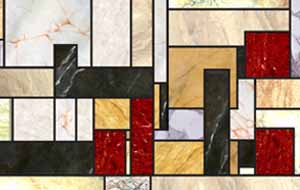One of the most intriguing yet compelling art moments of this Fall has been Huyghe + Corbusier: Harvard Project. The event, meant to celebrate the 40th anniversary of the Carpenter Center for the Visual Arts –the only of Le Corbusier’s buildings in the US--–, was curated by Linda Norden and Scott Rothkopf.
French artist Pierre Huyghe, who is now living in New York, was the recipient of the 2002 Hugo Boss Prize from the Guggenheim Museum and is largely regarded as an artist whose great talent is proportional to the complexity of the questions he raises each time he shows a new project. This one, presented on November 18, was no exception.
As most of Huyghe’s work to date, his intervention at the Carpenter Center involved a variety of media and collaborators and dealt with matters of history, remembrance, reality, staged representation and fable.
Here is what the attendees of the event saw: on one side of Le Corbusier’s building on Quincy Street, forming a sheltered courtyard, Huyghe installed a small and ephemeral theater shaped as a tunnel, conceived as a collaboration with Michael Meredith, made of polycarbonate tiles and covered with moss outside. This postmodern “parasite” plugged into the modern concrete structure was actually a puppet theater in which took place a 30 minute show featuring puppet representations of the commissioners and actors of Le Corbusier’s intervention on Harvard’s campus as well as those of Pierre Huyghe’s intervention in Le Corbusier’s building. They are: Le Corbusier, Josep Lluis Sert (at that time dean of Harvard’s Architecture School), Eduard Sekler (first director of the Carpenter Center), curators Linda Norden and Scott Rothkopf and of course Pierre Huyghe himself. Another puppet representing the institution and introduced as “Mr. Harvard, dean of deans” stands as an enigmatic and imposing being in a black robe that appears like the hybrid of a giant praying mantis, the character of the Commander in Don Juan and Darth Vader. Retracing the conception of the building and that of Huyghe’s project –including all the tensions and controversies between the actors of both projects–, the puppet show was directed live by Pierre Huyghe backstage. In addition, a video featuring the same puppet characters, but slightly longer and more informed than the on-stage enactment, was simultaneously featured in the Carpenter Center’s movie theater. Existing formally as a multilayered event -–a building and its transforming, a puppet show, a video– the piece is yet even more semantically intricate since it articulates many stories and the story behind these stories, eventually bluring notions of space and time, as well as those of reality and fiction.
Huyghe’s Harvard Project comes in the lineage of many of the artist’s past projects, including Streamside Day Follies (2003), commissioned by the Dia Chelsea. A theater formed by the movement of mobile walls from the sides to the center of the gallery was already at that time used as a theater for a video projection. While the temporary architecture was to bring together a community of viewers, the video documented a party for the celebration of a new suburban settlement in rural upstate New York. Conceived and promoted as a traditional family party by Huyghe himself -–a real life event–, the celebration was videotaped and documented as a fictional tale emphasizing the birth of a new community in an unknown territory.
“Reenactment,” “staging” or “playing” are probably too small of concepts to define the process of such projects as Streamside Day Follies and the Harvard Project. In an interview for October # 110 (Fall 2004), Huyghe prefers to speak about “re-scenerazing” the real. It might be significant to note that both projects emphasize the relations between a community of people brought together because of some common interests, the construction of a building to host this community and a celebration of the construction. These are above all projects driven by the will to represent a given situation in a specific context; what is shown is consequently a group of pieces documenting the situation; emphasizing the means more than the goal and the journey more than the destination. Huyghe’s work is to be understood as a work in progress or, to paraphrase the title of one of his earliest works: a “permanent construction site.”
For more information about Pierre Huyghe’s Harvard Project, I highly recommend reading the free brochure available at the Carpenter Center’s Sert Gallery (second floor), where Working Title, the video resulting from the project, is displayed through April 17, 2005.
Links:
Carpenter Center for the Visual Arts, Harvard Univeristy, Cambridge.
"Huyghe + Corbusier: Harvard Project" is on view in the Sert Gallery at the Carpenter Center through April 17, 2005.
All images are courtesy of the artist and Harvard University Museums.
Christophe Perez is the associate editor of Big, Red & Shiny.




